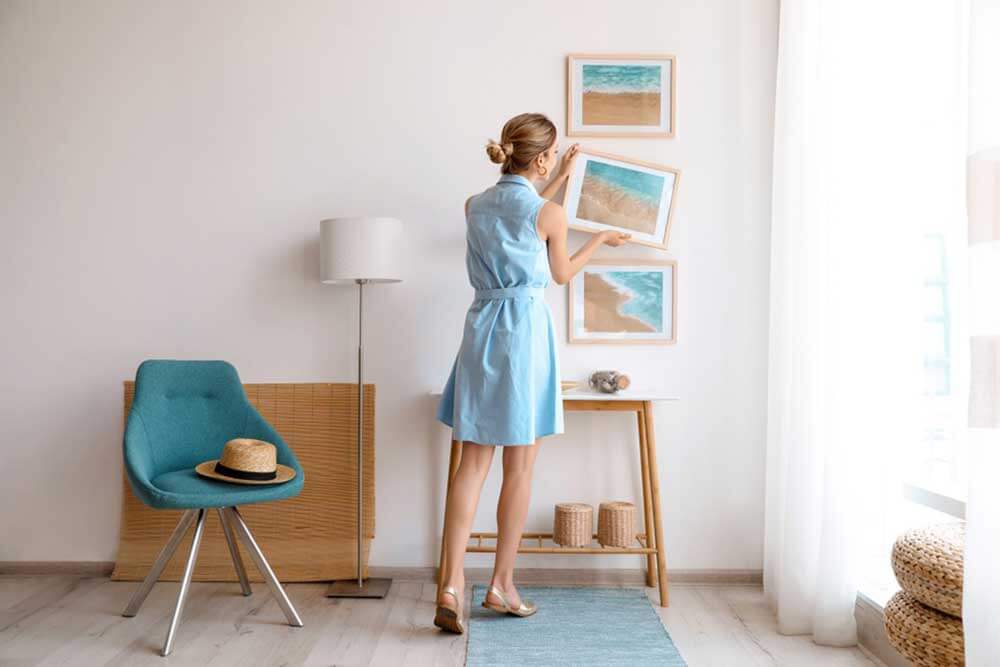
We don’t need to hire a professional interior designer to create a room that we love. Just like any design pro, we can design a room on our own that fits our unique personality and needs by following the same rulebook they do.
1. Determine the Budget
Decide on the design budget before starting, so we don’t overspend and can keep our projects under control. Prioritize our needs and wants and estimate their costs. For example, we may already know that we want a Simmons Beautyrest Mattress, so factor that cost into a budget immediately. A spreadsheet can be helpful. If we’re sourcing any of the materials, we’ll have to calculate the square footage of the area or certain parts of it. Consider adding 10 to 20% to our estimates for possible overruns. Now that we have a budget, commit to sticking to it.
2. Establish a Mood
Forget how the space looks for a minute. Instead of relying on trends and styles, consider the room’s purpose and how we want the room to feel. This can be our guide to choosing themes, styles, textures, colors, furnishings, accessories, and décor that work for us.
3. Find Inspiration
Scour Pinterest boards, interior design magazines, art books, and designers’ websites to find inspiration for the room we want to create. See what catches our eyes or evokes the mood we wish to set for the room. It can also help to find a single “springboard” object like a particular piece of décor or artwork around which we can organize and direct the rest of our design efforts.
4. Consider the Practical
Who will be using the room, one person or an entire family? When selecting fabrics, consider the level of wear and type of use they may endure. For example, in a room with rambunctious children and pets, our choice of fabrics, flooring, and furnishings will need to be more durable, rugged, and manageable to clean than those in the home of a single individual or couple without pets or children.
5. Eliminate Clutter
Before placing any new items in a room, remove everything from the room that no longer belongs there. Clutter can be as small as old knick-knacks we no longer even remember how we got or as large as ceiling fixtures. If the room is already empty and we’re designing it from scratch, we can skip this step.
6. Make a Map
We want to make sure all the furniture — from the Casper Mattress to the dresser — fits in the available space. Ensure to leave enough room for comfort and whatever activities will be taking place there. Mapping out all the items we intend to place in the room in their proper positions and drawing them to scale will help us visualize how the room will look and, frankly, whether the current plan will work. Graph paper and a calculator are all we really need to do this, though there are also software apps for the more tech-savvy.
7. Choose the Best Color Palette
What color scheme will evoke the mood we want to set for the room? Would a bold, bright, colorful palette work better or a subdued, subtle one or neutral tones? A neutral palette lets us mix and match different colors of furnishings and accessories and change them out as desired. If we have the main color in mind for the room, pick a few complimentary shades of that color to add texture.
8. Select Anchor Pieces
If we selected a springboard piece to inspire our designs, that might also be one of our anchor pieces, but we’ll almost surely have others: a dresser, a wardrobe, a chair, or our beds like PranaSleep Mattress that would naturally help anchor the room. By selecting the large furnishings first, we can ensure our budget covers key items and doesn’t accidentally get squandered away on high-ticket accessories. This will also help us visualize the room more fully than our maps allow.
9. Choose Secondary Pieces
Once we see how the key furnishings fit into the space, we can start looking at which secondary items, like nightstands and floor lamps, can realistically fit in the available spaces.
10. Pick Out Fabrics and Textiles
With all the furnishings — primary and secondary — – selected and placed, we can start choosing curtains, bedding, rugs, throws, and other fabrics and textiles.
11. Set Lighting
How we light the room will determine how well we can set the desired mood and how well we can see and move around while using the space. Are there windows in the room, and how much light does it let? Would sheer curtains to let in natural light work better for us or shutters to dampen it? Would we prefer an overhead lighting fixture to light up the whole room at once, or would we rather highlight different portions of the room at different times using floor lamps?
12. Place Accessories
Here’s where the little touches matter in a big way. The throw pillows, artwork, and decorations — such as plants, statuettes, and framed photos — are what inject our personality and uniqueness into the space.
Time to Get Designing
Designing a room is not rocket science, and it can even be a whole lot of fun. More importantly, we can do just as well as a pro if we keep certain key points in mind. Know our room’s purpose. Remember who will be using it as well as the size of the space compared to the things we’re thinking of putting in it and how much space we’ll need to move around. Do research, formulate a plan, and shop around. Consider the large elements, such as signature pieces and lighting, and the small ones, such as accessories and décor. Create a consistent look and feel. And above all, make it personal and ensure it reflects our unique character and style.




